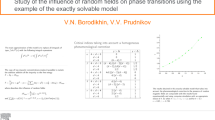Abstract
The problem of irreversibility in thermodynamics is revisited and analyzed on the microscopic, stochastic, and macroscopic levels of description. It is demonstrated that Newtonian dynamics can be represented in the Reynolds form when each dynamical variable is decomposed into mean and fluctuation components. Additional equations coupling fluctuations and the mean values follow from the stabilization principle. The main idea of this principle is that the fluctuations must be selected from the condition that they suppress the original instability down to a neutral stability. Supplemented by the stabilization principle, the Hamiltonian or Lagrangian formalisms can describe the transition from fully reversible to irreversible motions as a result of the decomposition of chaotic motions (which are very likely to occur in many-body problems) into regular (macroscopic) motions and fluctuations. On the stochastic level of description, a new phenomenological force with non-Lipschitz properties is introduced. This force, as a resultant of a large number of collisions of a selected particle with other particles, has characteristics which are uniquely defined by the thermodynamic parameters of the process under consideration, and it represents a part of the mathematical formalism describing a random-walk-like process without invoking any probabilistic arguments. Additional non-Lipschitz thermodynamic forces are incorporated into macroscopic models of transport phenomena in order to introduce a time scale. These forces are effective only within a small domain around equilibria. Without causing any changes in other domains, they are responsible for the finite time of approaching equilibria. Such a property is very important for the interpretation of irreversibility on the macroscopic scale.
Similar content being viewed by others
References
Arnold, V. (1988).Mathematical Methods of Classical Mechanics, Springer-Verlag, New York, p. 331.
Barone, S. R. (1993). Newtonian chaos + Heisenberg uncertainty=macroscopic indeterminary,American Institute of Physics,61(JSS 5), 423–427.
Godel, K. (1931).Monatshefte für Mathematik und Physik,38, 173.
Synge, J. L. (1926). On the geometry of dynamics,Philosophical Transactions of the Royal Society of London, Series A,226, 31–106.
Prigogine, I. (1980).From Being to Becoming, Freeman, San Francisco.
Reynolds, O. (1895).Philosophical Transactions of the Royal Society,1895, 186.
Richardson, D. (1968).Journal of Symbolic Logic,33, 514.
Zak, M. (1992). The problem of irreversibility in Newtonian dynamics,International Journal of Theoretical Physics,31(2), 332–342.
Zak, M. (1993a). Terminal model of Newtonian dynamics,International Journal of Theoretical Physics,32(1), 159–190.
Zak, M. (1993b). Introduction to terminal dynamics,Complex Systems,7(1), 59–87.
Zak, M. (1994). Postinstability models in dynamics,International Journal of Theoretical Physics,33(11), 2215–2280.
Author information
Authors and Affiliations
Rights and permissions
About this article
Cite this article
Zak, M. Irreversibility in thermodynamics. Int J Theor Phys 35, 347–382 (1996). https://doi.org/10.1007/BF02083821
Received:
Issue Date:
DOI: https://doi.org/10.1007/BF02083821




